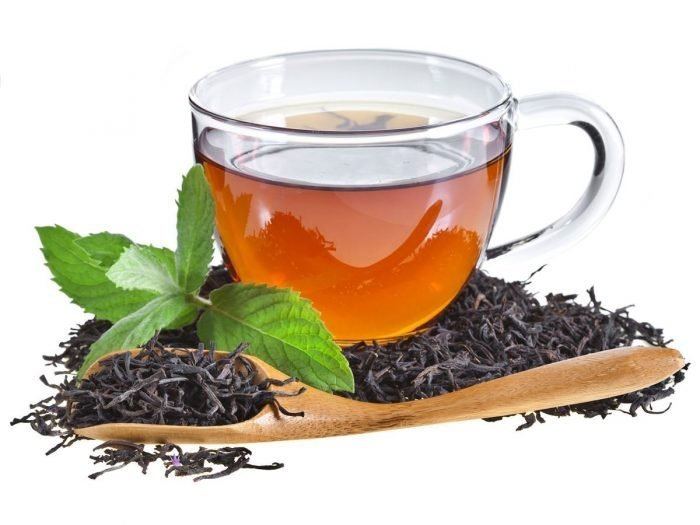 | ||
Similar | ||
Black tea is a type of tea that is more oxidized than oolong, green and white teas. Black tea is generally stronger in flavor than the less oxidized teas. All four types are made from leaves of the shrub (or small tree) Camellia sinensis. Two principal varieties of the species are used – the small-leaved Chinese variety plant (C. sinensis subsp. sinensis), used for most other types of teas, and the large-leaved Assamese plant (C. sinensis subsp. assamica), which was traditionally mainly used for black tea, although in recent years some green and white have been produced.
Contents
- black tea health benefits of black tea black tea for weight loss skin hair
- Varieties
- Blends
- Manufacture
- Tea grading
- Brewing
- Major producers
- Research
- References
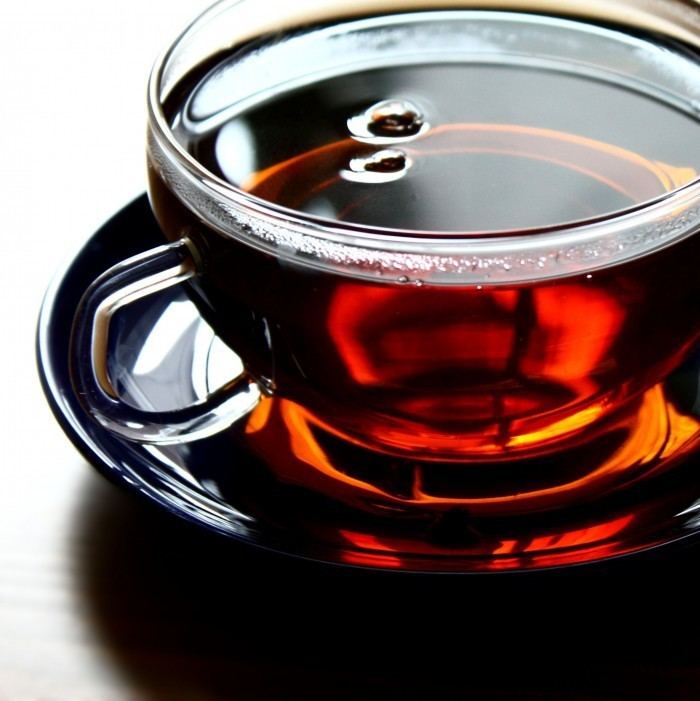
In Chinese and the languages of neighboring countries, black tea is known as "red tea" (Chinese 紅茶 hóngchá, pronounced [xʊ̌ŋʈʂʰǎ]; Japanese 紅茶 kōcha; Korean 홍차 hongcha, Bengali লাল চা Lal cha, Assamese ৰঙা চাহ Ronga chah), a description of the colour of the liquid; the Western term "black tea" refers to the colour of the oxidized leaves. In Chinese, "black tea" is a commonly used classification for post-fermented teas, such as Pu-erh tea; outside of China and its neighbouring countries, "red tea" more commonly refers to rooibos, a South African herbal tea.
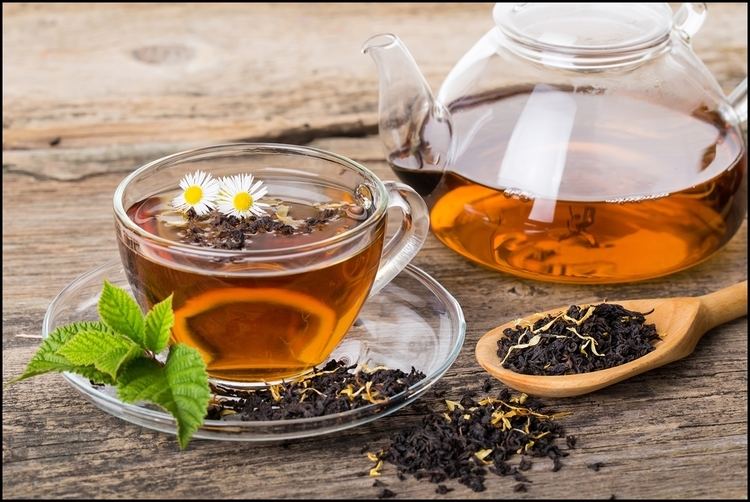
While green tea usually loses its flavor within a year, black tea retains its flavour for several years. For this reason, it has long been an article of trade, and compressed bricks of black tea even served as a form of de facto currency in Mongolia, Tibet and Siberia into the 19th century. Although green tea has recently seen a revival due to its purported health benefits, black tea still accounts for over ninety percent of all tea sold in the West.
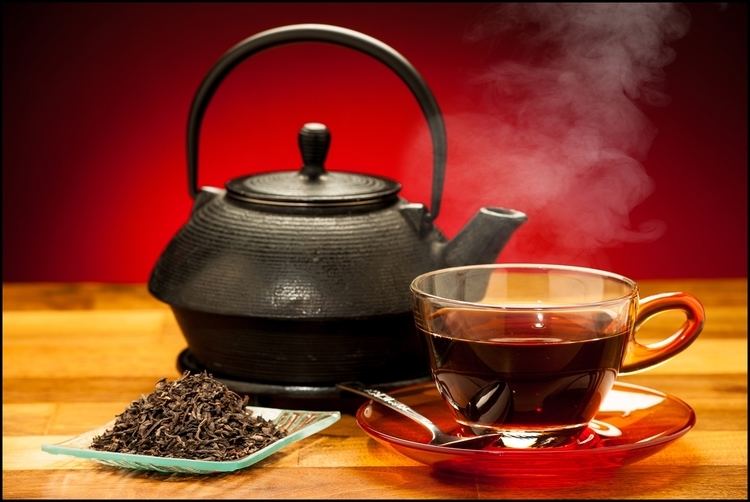
black tea health benefits of black tea black tea for weight loss skin hair
Varieties
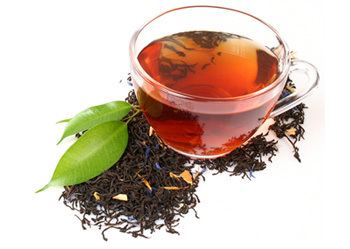
Generally, unblended black teas are named after the region in which they are produced. Often, different regions are known for producing teas with characteristic flavors.
Blends
Black tea is often blended and mixed with various other plants in order to obtain a beverage.
Manufacture

- After the harvest, the leaves are first withered by blowing air on them.
- Then black teas are processed in either of two ways, CTC (Crush, Tear, Curl) or orthodox. The CTC method produces leaves of fannings or dust grades that are commonly used in tea bags but also produces higher (broken leaf) grades such as BOP CTC and GFBOP CTC (see gradings below for more details). This method is efficient and effective for producing a better quality product from medium and lower quality leaves of consistently dark color. Orthodox processing is done either by machines or by hand. Hand processing is used for high quality teas. While the methods employed in orthodox processing differ by tea type, this style of processing results in the high quality loose tea sought by many connoisseurs. The tea leaves are allowed to completely oxidize.
- Orthodox: The withered tea leaves are heavily rolled either by hand or mechanically through the use of a cylindrical rolling table or a rotovane. The rolling table consists of a ridged table-top moving in an eccentric manner to a large hopper of tea leaves, of which the leaves are pressed down onto the table-top. The process produces a mixture of whole and broken leaves, and particles which are then sorted, oxidized, and dried. The rotorvane (rotovane), created by Ian McTear in 1957 can be used to replicate the orthodox process. The rotovane consisted on an auger pushing withered tea leaves through a vane cylinder which crushes and evenly cuts the leaves, however the process is more recently superseded by the boruah continuous roller, which consists of an oscillating conical roller around the inside a ridged cylinder. The rotorvane can consistently duplicate broken orthodox processed black tea of even sized broken leaves, however it cannot produce whole leaf black tea. The broken leaves and particles from the orthodox method can feed into the CTC method for further processing into fanning or dust grade teas.
- CTC: "Cut, tear, curl" or "Crush, tear, curl" black teas is a production method developed by William McKercher in 1930. It is considered by some as a significantly improved method of producing black tea to the orthodox through the mincing of wither tea leaves. The use of a rotovane to precut the withered tea is a common preprocessing method prior to feeding into the CTC CTC machines then further shred the leaves from the rotavane by processing them through several series of contra-rotation rotors with surfaces patterning that cut and tear the leaves to very fine particles.
- Next, the leaves are oxidized under controlled temperature and humidity. (This process is also called "fermentation", which is a misnomer since no actual fermentation takes place. Polyphenol oxidase is the enzyme active in the process.) The level of oxidation determines the type (or "colour") of the tea; with fully oxidised becoming black tea, low oxidised becoming green tea, and partially oxidised making up the various levels of oolong tea. This can be done on the floor in batches or on a conveyor bed with air flow for proper oxidation and temperature control. Since oxidation begins at the rolling stage itself, the time between these stages is also a crucial factor in the quality of the tea; however, fast processing of the tea leaves through continuous methods can effectively make this a separate step. The oxidisation has an important effect on the taste of the end product, but the amount of oxidisation is not an indication of quality. Tea producers match oxidisation levels to the teas they produce to give the desired end characteristics.
- Then the leaves are dried to arrest the oxidation process.
- Finally, the leaves are sorted into grades according to their sizes (whole leaf, brokens, fannings and dust), usually with the use of sieves. The tea could be further sub-graded according to other criteria.
The tea is then ready for packaging.
Tea grading
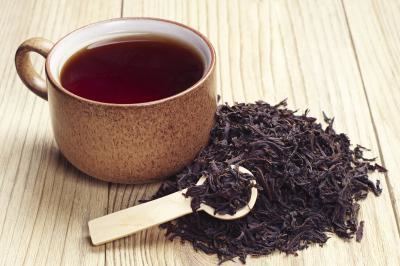
Black tea is usually graded on one of four scales of quality. Whole leaf teas are the highest quality, with the best whole leaf teas graded as "orange pekoe". After the whole leaf teas, the scale degrades to broken leaves, fannings, then dusts. Whole leaf teas are produced with little or no alteration to the tea leaf. This results in a finished product with a coarser texture than that of bagged teas. Whole leaf teas are widely considered the most valuable, especially if they contain leaf tips. Broken leaves are commonly sold as medium grade loose teas. Smaller broken varieties may be included in tea bags. Fannings are usually small particles of tea left over from the production of larger tea varieties, but are occasionally manufactured specifically for use in bagged teas. Dusts are the finest particles of tea left over from production of the above varieties, and are often used for tea bags with very fast, very harsh brews. Fannings and dust are useful in bagged teas because the greater surface area of the many particles allows for a fast, complete diffusion of the tea into the water. Fannings and dusts usually have a darker colour, lack of sweetness, and stronger flavor when brewed.
Brewing
Generally, 4 grams of tea per 200 ml of water Unlike green teas, which turn bitter when brewed at higher temperatures, black tea should be steeped in water brought up to 90–95 °C. The first brew should be 60 sec. the second brew 40 sec. the third brew 60 sec.; if one's tea is of high quality one can continue to brew by progressively adding 10 sec. to the brew time following the third infusion (note: when using a larger tea pot the ratio of tea to water will need to be adjusted to achieve similar results).
Standard black tea Brewing
(Note: A cold vessel lowers the steep temperature; due to this, always be sure to rinse the vessel with +90 °C water before brewing)
The more delicate black teas, such as Darjeeling, should be steeped for 3 to 4 minutes. The same holds for broken leaf teas, which have more surface area and need less brewing time than whole leaves. Whole leaf black teas, and black teas that will be served with milk or lemon, should be steeped 4 to 5 minutes. Longer steeping times make the tea bitter (at this point, in the UK it is referred to as being "stewed"). When the tea has brewed long enough to suit the tastes of the drinker, it should be strained before serving.
The ISO Standard 3103 defines how to brew tea for tasting.
Major producers
The biggest producers of black tea in the world are:
Research
Plain black tea without sweeteners or additives contains caffeine but negligible quantities of calories or nutrients. Some flavored tea with different herbs added may have less than 1 gram of carbohydrates. Black teas from the Camellia sinensis tea plant contain polyphenols known as thearubigins and theaflavins.
Meta-analyses of observational studies have concluded that black tea consumption does not affect the development of oral cancers in Asian or Caucasian populations, esophageal cancer or prostate cancer in Asian populations, or lung cancer.
Black tea consumption may be associated with a reduced risk of stroke.
A 2013 Cochrane review of randomized controlled trials greater than 3 months duration concluded that long-term consumption of black tea only slightly lowers systolic and diastolic blood pressures (about 1-2 mmHg).
A 2013 Cochrane review concluded that long-term black tea consumption lowers the blood concentration of LDL cholesterol by 0.43 mmol/L (or 7.74 mg/dL) but overall this research remains inconclusive.
